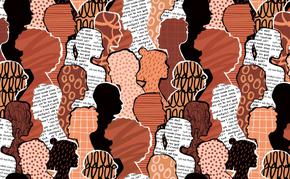The views expressed in our content reflect individual perspectives and do not represent the authoritative views of the Baha'i Faith.
My focus, aside from work, involves mentoring youth groups in the Baha’i Junior Youth Empowerment Program.
The Junior Youth Empowerment Program, one of the core activities of Baha’i community building, centers on empowering “junior youth,” ages 12-14, by asking them questions about the kind of world they want to live in, and helping them create service projects to translate their answers into reality.
RELATED: What Is the Junior Youth Spiritual Empowerment Program?
Of the potential of this age group to participate in social change, the Youth Conference Materials, written by the Baha’i World Centre for youth, describe:
A proper understanding of this age is that of selfless young people with ‘an acute sense of justice, eagerness to learn about the universe and a desire to contribute to the construction of a better world.’
Mentors of junior youth groups, usually youth themselves, are called “animators,” which comes from the word “animate:” to bring to life.
In this case, animators bring their junior youth to life by helping them discover their own voices and capacity. It is different from “teaching,” which can treat students as empty receptacles to be filled with knowledge. Rather, we see young people as mines already filled with treasure, and our job is to listen, not talk, to discover where it is, and bring it out. As Baha’u’llah wrote: “Regard man as a mine rich in gems of inestimable value. Education can, alone, cause it to reveal its treasures, and enable mankind to benefit therefrom.”
Animators aren’t teachers who know what the lessons are, because the questions we ask are ones we ourselves don’t know the answers to, like, “What does the world we should strive to build look like?” The lessons can’t be planned, they have to be co-discovered; so we position ourselves as students, and our junior youth as teachers.
The first of my junior youth groups, the Young Artist Thinkers, overflows with creative juice. As we start, one of our girls asks if she can show us a painting she created during the week. While doing an activity that asks them to write a few sentences using words from a word bank, another of our girls voluntarily writes a whole essay, in order to tell us the ways that swimming, her extracurricular passion, can function as an art form. Her dream: to become a doctor in order to help others who experience the same skin condition as her.
We end with another of our girls getting us to download “Among Us” on our phones so she can teach us how to play. We laugh and banter as we accuse one another of being the imposter.
What I learn from my junior youth, I draw into comics, such as a webcomic I just started, “Ron’s Baha’i Comics.”
Baha’is publishing books or other media about the Faith first submit their work to review, which checks that everything conveyed about the Faith is accurate, and that it is presented in a dignified manner. The Review Office responds to my submission with an email playfully noting that this is the first webcomic that’s come to their desk, and asking for clarification if it is to appear primarily in a social media post (in which case it requires less formal review) or if it should be treated as an eBook (in which cause it requires the same level of review as a book for print.)
I explain that webcomic platforms are like YouTube; the way most younger artists publish our work these days for built-in audiences, and the way most of us read comics now rather than buying print magazines or volumes.
The cool thing about the Baha’i world, a culture so young that we’re building it at the same time as we’re living in it: there are a lot of places where you can still be the first at something.
RELATED: Youth, Study Circles, and the Greatness of this Day!
Then, like that process where every participant is also a teacher, you end up teaching the institutions something about how the world is changing; and co-create the processes of our emerging new reality together.
Back to the topic of junior youth groups – on another day, we make a trip through the neighborhood of my second junior youth group, the Youth Stars, to deliver the next book in the curriculum we’re reading to their homes; to tell the families that our neighborhood team now has a tutor for any junior youth wanting homework help; and that we’ve also organized socially-distanced story readings outside of the local library to help the children cope with pandemic-induced isolation. Heavy rain adds some atmosphere to that main quest. Our boys shout to me from apartment windows as I run through puddles to their door.
One of the moms describes to me how she asked the teacher to help her daughter with a subject she was getting a C in, and the teacher said, “I only teach the class, but I won’t help outside of the class. She should find someone else to help.” They interpret it as the white teacher’s unexamined racism. It’s a neighborhood of mostly undocumented brown immigrants, and I have to agree with them. So she’s happy our team has a tutor, whom I agree to put her in touch with.
Another of our girls tells us her birthday was yesterday, and we missed it. She’s 14 now. This is what I worried most about when our group switched to virtual interaction; losing touch with our youth. When social distancing is over, I’ll be most eager to physically become present again. Her little cousin asks if someone can pick her up for our story reading day, which I also arrange with the team.For Baha’is, social change doesn’t happen at a distance, it happens up close. Our activities bring us to neighborhoods outside of our own experience. Rather than implementing a short-term project to “help” the community, our activities make us a long-term part of the community’s fabric; and we become aware of both the hidden injustices they experience and also of our own hidden privilege. To become effective allies, to co-discover what justice means to the communities that have become our beat, we must once again position ourselves as the students of our participants. As Paulo Freire, in his book, “Pedagogy of the Oppressed,” describes an educational process designed for liberation, it: “… must be forged with, not for, the oppressed (whether individuals or peoples) in the incessant struggle to regain their humanity.”

















Comments
Sign in or create an account
Continue with Facebookor